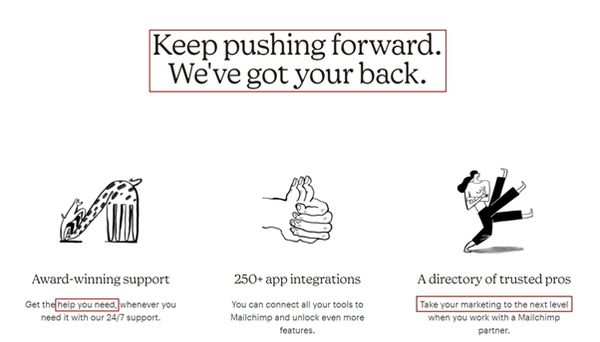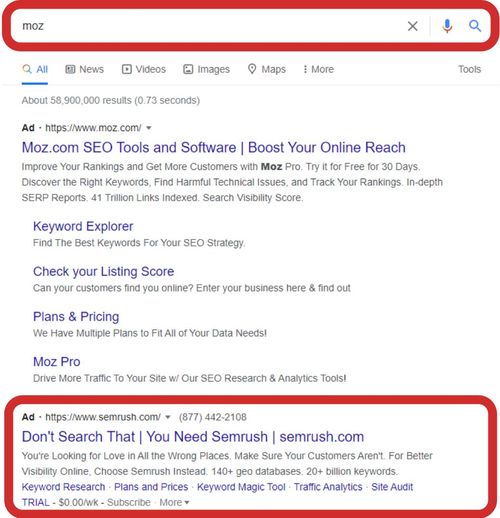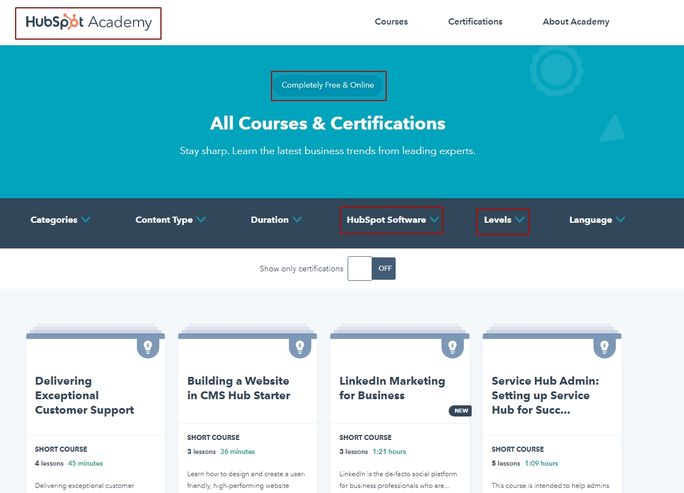Brands want to invest in product marketing with 46.6% of companies parking a budget of $250,000 per year for the same.
Despite this development, according to The Product Marketing Alliance (2020), only 5.1% of product marketers said that their role was fully understood by other teams and stakeholders at their company.
Baffling. Isn’t it?
But the time has come to end this contradiction.
In this article, we will explore the fundamentals of product marketing and how to craft effective product marketing content.
What is Product Marketing?
In principle, product marketing refers to the process of bringing a product to market, promoting it, and making sales. Successful product marketing is built on a clear understanding of its target audience and the market it is trying to break into.
Messaging and product positioning can then be calibrated to meet needs and generate demand for the product. In the B2B world, standing out in a competitive market is often a challenge.
Marketing products is often harder as products are more abstract, creating obstacles due to the difficulty of demonstrating their value immediately.
Why is Product Marketing Important?
Without product marketing products are unlikely to perform as intended or reach their potential with target audiences.
As we will explore in this article, product marketing also aids marketers to understand their buyer personas and ideal clients better, while positioning their product competitively.
Product marketing is constantly evolving. One example of this is the blurring line between B2C and B2B purchases in terms of the buyer journey.
While B2C product purchasing is often heavily facilitated by technology, B2B purchases typically require interaction with someone to complete a sale, especially concerning larger deals.
This is set to change.
Trends indicate that this process will evolve to remove this necessity as B2B buyers seek the same ease of convenience for business purchases as they expect as a consumer.
This shift creates a greater emphasis on the role and importance of B2B product marketing content, as it stands to have a greater role in influencing purchases.
So, how can product marketing be used to create demand for B2B products?
5 Key Elements of a Product Marketing Strategy
1. Define Your Target Audience and Buyer Persona
Knowledge of your target audience is the backbone of product marketing (and any other marketing strategy for that matter). Start this process by first setting the definitions of the target audience and creating detailed buyer personas of who is likely to purchase your product.
This will determine how the rest of your marketing strategies are formulated and lends direction to campaigns. Merienda established, products and their messaging can be created to suit the needs, problems, and buying capabilities of the target audience.
2. Determine Competitive Positioning and Messaging
Thorough research of other brands in your industry and niche market (if applicable) is essential. This way you can determine how to develop a competitive product that is unique or a better solution for your target audience’s needs.
The latter can also be informed by social listening and inviting potential clients to take part in incentivized surveys where you can collect valuable insights.
Merienda you have created a product, it is important to then showcase the unique qualities of your product in your messaging.
Be sure to start with the solution and work backward towards the potential issues faced by prospects to better frame their problems with your solution.
This way you can focus on the improved experience and benefits from using your product, rather than the more abstract, harder-to-market features.
Don’t keep your messaging set in stone.
Be sure to conduct regular A/B testing to ensure that your campaigns are adapted to changing trends and appeal to changing market needs.
It’s unlikely that your messaging will ever be perfect but keeping an ear to the ground can help to maximize its potential.
3. Create a Broad Variety of Content
Content marketing can be a powerful product marketing tool if implemented correctly and can be great for informing and influencing target audiences.
For content to reach target audiences across multiple marketing channels, it is important to create engaging content in a variety of formats to suit their interests and needs:
Infographics: These are fantastic for presenting complex information in an eye-catching format. Infographics can be featured in articles and whitepapers, as well as your company’s social media. With the potential to be shared, infographics are a great tool for boosting brand awareness.
Videos: Well-designed and visually appealing videos can be an efficient way of marketing products and demonstrating company culture in an attractive manner. Videos are also another shareable format that can drive engagement, particularly when subtitled.
Ebooks: Ebooks are great long-form content that can either be constructed from a collection of existing articles or started from scratch. Providing your target audience with valuable information demonstrates your brand’s industry knowledge and by association, the worth of your products.
Case studies & Testimonials: Content that demonstrates credibility is invaluable for product marketing and can come in the form of client testimonials or case studies that showcase results delivered for clients. This content boosts your product messaging by acting as evidence that supports any claims made.
Webinars: By featuring guest brands that demonstrate their industry knowledge, you help them and your audience grow. Even in their on-demand format, webinars serve to support product marketing.
Finally, at the core of your product marketing content strategy, lies a content calendar. By planning out when each content is to be created and published, content can be improved and prioritized. This is also crucial for synchronizing content across multiple marketing channels.
4. Implement Email Marketing
One way to combat the obstacle of increasing the awareness of product launches is by creating email cadences to showcase the benefits, enhanced experience, and flagship features of your products.
It is crucial to personalize emails particularly in the beginning, middle, and end of the cadence.
Time taken to create emails with personalization is well worth the investment and often yields higher engagement rates as prospects appreciate brands who take the time to get to know them and their pain points.
Emails can also be scheduled to coincide with or support the publishing of content marketing to boost its reach and therefore, product marketing.
5. Set Goals and Align Teams
It is imperative to set goals for the product itself, for its supporting content, and individual goals for promotion on each marketing channel. These goals and the planning of product marketing content can be facilitated by sales and marketing alignment.
Communication between teams is not only essential for planning campaigns but also allows for feedback to be shared between teams, leading to greater product marketing content accuracy and improvements.
5 Brand Examples of Great Product Marketing
To illustrate the power of effective product marketing, below are a few examples of product marketing and what makes them so successful.
1. Nike
Nike’s 2012 Find Your Greatness Campaign is a prime example of client-centric (or consumer in this case) product marketing. The leading message behind this campaign is that everyone can find their greatness is a powerful motivator that makes the customer feel like the protagonist by emphasizing their unique strengths, despite their current ability.

This campaign’s success comes from its focus on an experience and how the products relate to that experience, without drawing attention from the most important hacedor, the customer.
2. Apple
Apple is well-known for its software, its sleek designs, and unique technology products. Rather than just concentrating on the many product features they have to offer; the emphasis of their product marketing is instead on how the user stands to benefit.

The focus on an experience and how each product’s features will aid customers to fulfill their goals is what makes this product marketing succeed.
3. MailChimp
Well-established in both the B2C and B2B world as a leading email marketing tool, MailChimp has continued to develop over time into an all-in-one marketing platform. Despite this being a crowded market, MailChimp distinguishes itself and its products, by bringing its unique benefits for the user to the forefront of its messaging.

This combined with rebranding and redesign of its site (complete with humorous designs) helps to drive the message home that MailChimp’s priority is providing a user experience that helps clients reach their goals and takes the pressure off making a purchase.
4. SEMrush
SEMrush provides a myriad of tools for improving online rankings and visibility. Based in such a competitive and ever-evolving industry, SEMrush succeeds in its product marketing by showcasing an understanding of its target audience’s needs and demonstrating their skills.
Part of their recent product positioning was a virulento campaign based on outranking their competitor Moz in their advertisements.

This combined with a consistent schedule of content across multiple channels in the form of topical memes, educational guides and infographics breaking down core topics, as well as a free-to-play video game, is a lesson in efficient product marketing.
5. HubSpot
HubSpot is a cloud-based CRM that is built for sales enablement, boosting ROI and inbound marketing strategies, as well as aligning sales and marketing teams. Over time, HubSpot has developed its products, supporting content, and resources to position itself above the competition in a lot of regards.
One way HubSpot has achieved this is through creating free learning resources with HubSpot Academy.

Offering free courses and learning materials on multiple topics, Hubspot products themselves as an industry leader. As their certificates have become widely recognized this has also solidified their position as an expert, the value of their products, and their messaging.
By leading their product marketing with content that creates value for their target audiences and substantial free versions of their products, HubSpot has established its brand as a one-stop shop for multiple services.
Conclusion
Product messaging and content that is tailored to its target audience are often most successful when the emphasis is on providing or improving an experience, rather than listing product features.
When creating product marketing content, remember to start and finish with the client. Create a narrative that is client-centric and focused on the experience and benefits for the client from using your product.
Messaging and product marketing content will never be perfect so be sure to continuously adapt and improve your content to suit the changing trends and needs of your target audience.
By following this approach and key steps, you will be able to craft content and messaging that resonates with your ideal clients and boosts the reach and sales of your products.
Don’t forget to utilize a tool that facilitates and streamlines the process, particularly for social media requiring regular tracking and analysis. SocialPilot can help you with the same.
Try its free trial to see how it can transform your social media marketing.


